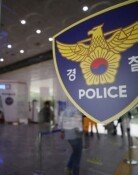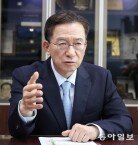S. Korean auto industry’s productivity is about half of advanced countries’
S. Korean auto industry’s productivity is about half of advanced countries’
Posted July. 29, 2020 07:39,
Updated July. 29, 2020 07:39
While the global automobile industry is beginning to increase production from the second half of this year after a serious recession in the first of the year due to COVID-19. However, the South Korean auto industry seems to be stuck with various regulations and rigid labor-management relations.
At the Fourth Industrial Development Forum and the Ninth Auto Industry Development From hosted by the Korea Automobile Manufacturers Association (KAMA) on Tuesday at the Korea Chamber of Commerce and Industry building in Jung-gu, Seoul, it was discussed how to promote the industrial productivity to overcome the slowdown brought on by COVID-19.
“While the South Korean manufacturing industry has improved its productivity thanks to automation and technological innovations, the auto industry remains reliant on labor input-based growth, witnessing its labor productivity dwindling,” said Han Pyong-ho, the associate director of the Korea Productivity Center. In particular, the labor productivity of small- and medium-sized businesses in the auto industry is only about 46 percent of large businesses’. Labor productivity refers to output or added value produced by a worker during a certain period of time.
The South Korean auto industry’s overall labor productivity from 2016 to 2018 is 155 million won, which is lower than the manufacturing industry’s average of 175 million won. In particular, the auto part industry’s figure is only 118 million won, which is less than half of the car manufacturing sector’s 263 million won.
The auto industry’s such a vulnerable structure, as well as the economic slowdown from COVID-19, prompted those in the industry to share the view that the existing ways of working will not be enough to respond to post-COVID-19 demands for cars. “As the trend of customizable cars will emerge in the future, the industry should manufacture various models at a fast speed,” said President Jung Man-ki of the KAMA. “A flexible approach to the operation of manufacturing facilities, labor input, and the management of working hours.”
Another issue pointed out as a challenge to be addressed was a situation in the auto industry where wage negotiations take place every year and even the redistribution of production volume among plants is not allowed without an agreement with a labor union.
Hyung-Seok Seo skytree08@donga.com







